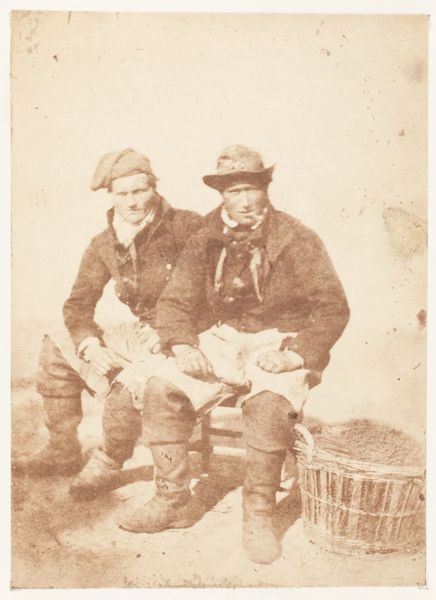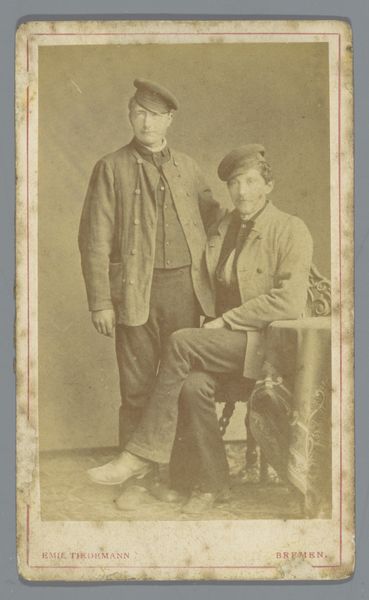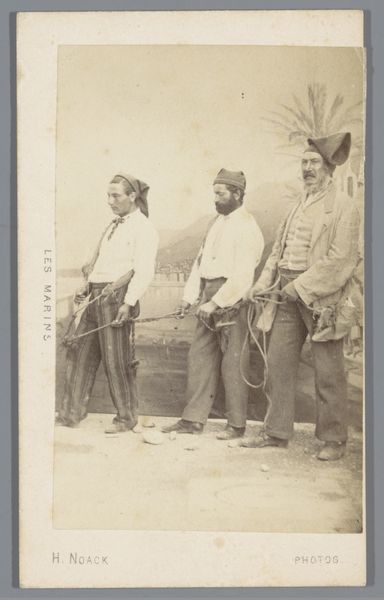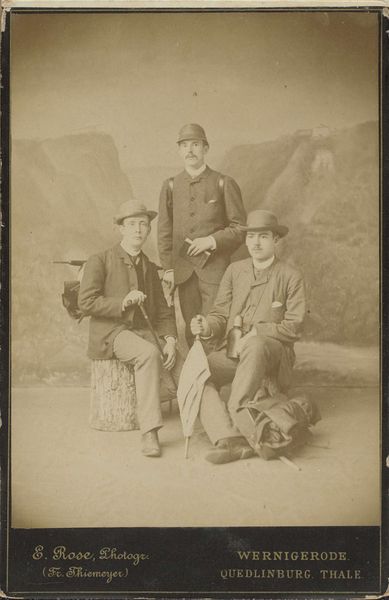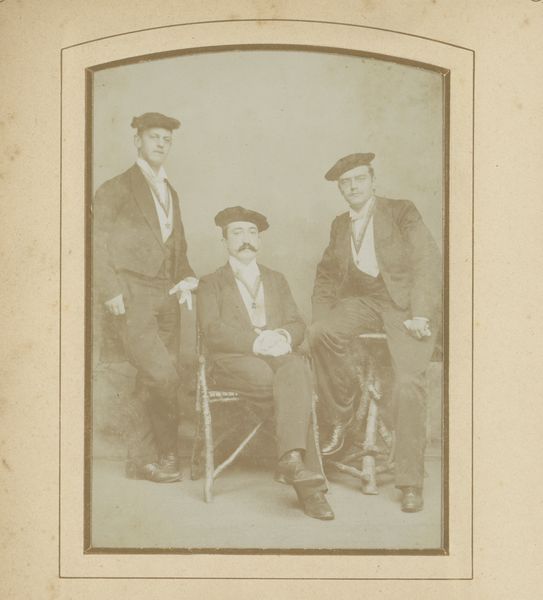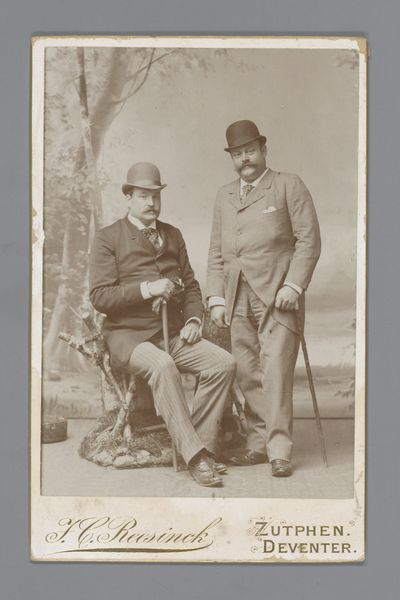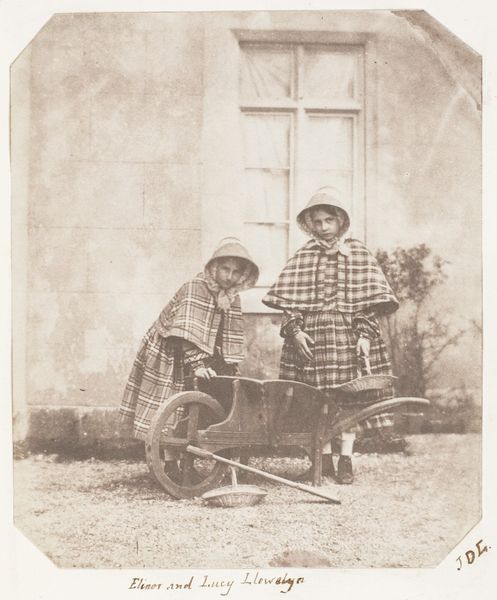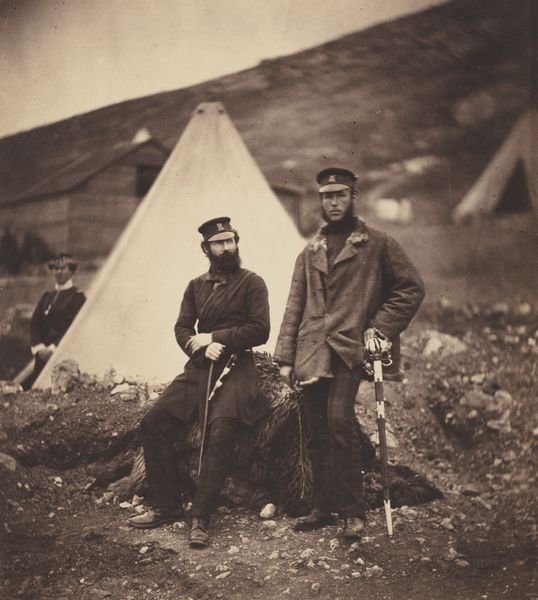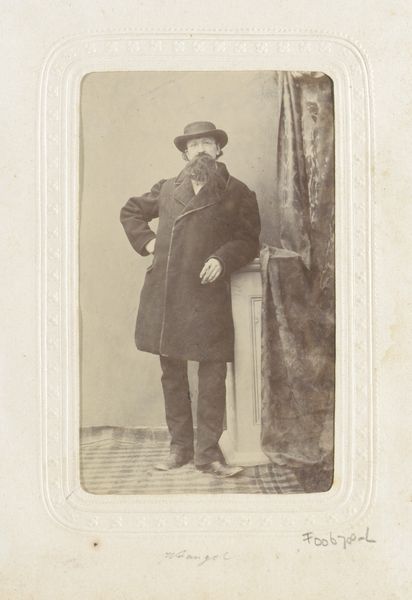
daguerreotype, photography
#
portrait
#
african-art
#
daguerreotype
#
archive photography
#
photography
#
historical photography
#
portrait reference
#
19th century
Dimensions: height 151 mm, width 204 mm
Copyright: Rijks Museum: Open Domain
Curator: This remarkable daguerreotype, dating from 1899 to 1900, presents a double portrait entitled "Portret van generaal Snijman en commandant Botha" by Jan van Hoepen. What strikes you initially about the image? Editor: The stark contrast immediately catches my eye, but there's also something very immediate and unsettling about the medium itself. It feels almost ghostly, as if we're looking at figures that are simultaneously present and absent. The backdrop almost clashes against their composure in that it makes them appear as though they are set for display in some market setting. Curator: It's important to consider the context. This photograph captures two significant figures of the Second Boer War. General Snijman, and Commandant Botha; two figures from different societal circles united against British rule in the Orange Free State, making them crucial in examining power structures of the period. How might their depiction here speak to larger narratives of resistance? Editor: If we scrutinize the means of its production, a daguerreotype, rather than the later paper prints, feels significant. This was a process requiring immense skill, specific materials and an expensive initial outlay—so the portrait must surely represent power and authority as much as documenting physical appearances. I think that van Hoepen’s careful arrangement reflects colonial gaze and ideas on how people would assume their places in those systems. The photograph served as documentation to further extend and make the people in power a constant presence. Curator: Absolutely. Furthermore, consider that photography was emerging as a powerful tool during this period. The act of creating and disseminating these images was inherently political, influencing public opinion and constructing narratives around identity and nationhood within South Africa but moreover also projecting that into other regions around the world. This artwork, then, offers insight into that colonial project but also reveals an agency these figures employed to control how they would be viewed by posterity or others contemporary who stood in opposition to them. Editor: That colonial presence can surely be felt in van Hoepen's handiwork in bringing his knowledge of making the images available at the disposal of the Boer war movement. As an archivist record, it offers layers to the processes and exchanges needed in producing artworks during that time. Curator: It makes you consider how their likeness might then circulate globally to sway allegiances to the movements by the people who sought support across national lines for their freedom. What really sticks with me about it is seeing this archive photograph for all that it carries forward from past histories still reverberate with us today making its statement remain timely and evermore compelling each time it encounters fresh viewership across geographies—what is most important becomes not merely how to read an artist's intentions behind creative agency, but the artwork becomes a portal into new possibilities. Editor: Indeed. I agree on the archival photograph revealing the relationship people have always cultivated with image production over eras since colonial past; seeing van Hoepen and subjects interacting across photographic plates makes its meanings only all the richer with renewed outlook as time progresses into new perspectives!
Comments
No comments
Be the first to comment and join the conversation on the ultimate creative platform.
